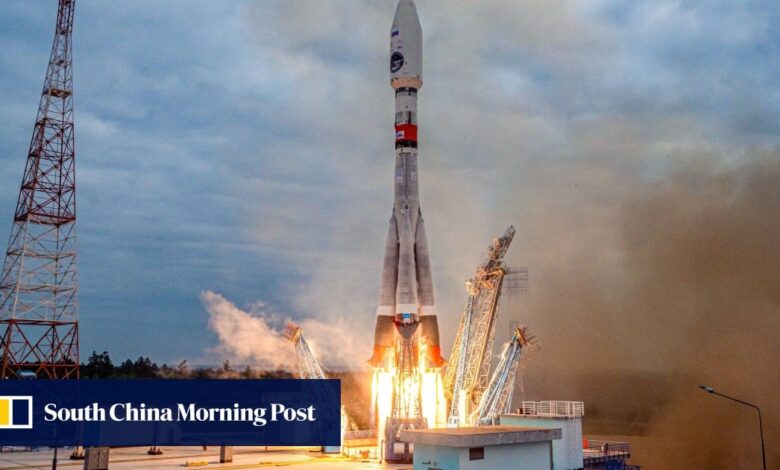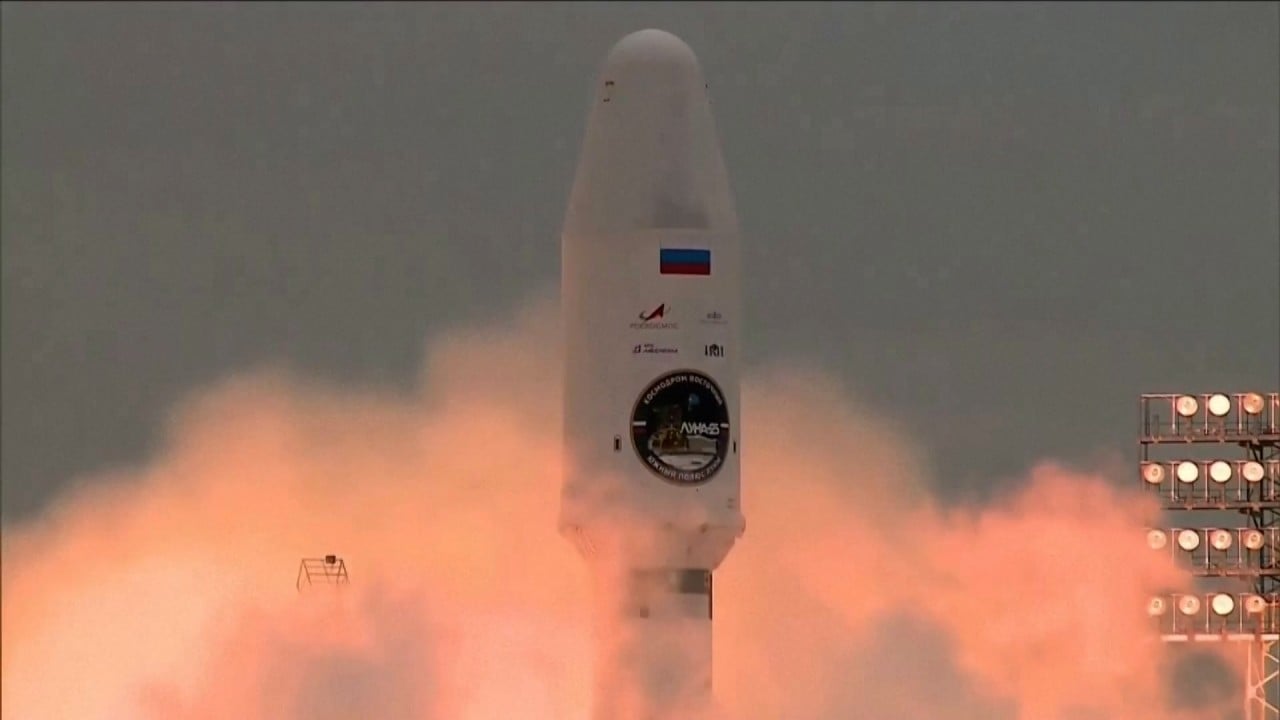Has China turned away from Russia in joint race to the moon?

[ad_1]
China and Russia would each send half a dozen spacecraft to complete the moon base, according to earlier proposals. However, the missions to be conducted by Russia were missing from the presentation given by a senior Chinese space scientist at this week’s International Astronautical Congress in Baku, Azerbaijan.
All partner missions, which appeared side by side with the Chinese ones in previous presentations, were left out.
Missions previously expected to launch using Russia’s Angara heavy-lift rockets for the main construction phase of the ILRS were also missing from Yu’s presentation slide.
It is possible that the unexpected failure of Luna-25 disrupted Russia’s planned schedule, and its absence from the blueprint was only temporary.
But some space observers said that it would not be a surprise if China decided to turn away from Russia following its poor performance in space in recent years.
“Luna-25 is just the latest embarrassment for the Russian space industry,” said Jonathan McDowell, a space programme historian and astronomer at Harvard University.
“One can also mention the repeated coolant leaks on the Soyuz and Progress ships last year,” he added, referring to incidents in December and February involving Russian spacecraft docked at the International Space Station.
Roscosmos blamed the leaks on micrometeoroid strikes, but some observers suspect manufacturing defects in the spacecraft were to blame.
“The fading reputation of Russian space combined with China’s increased confidence in its domestic space industry make a Russian connection less appealing, and less necessary,” McDowell said.
China offers more space for foreign equipment on future moon mission
China offers more space for foreign equipment on future moon mission
Namrata Goswami, an independent space policy scholar based in the US state of Alabama, said the absence of the Russian missions from Yu’s presentation should not be read as a direct signal from China that the space partnership had become uncertain.
“We cannot assume that the China-Russia space relationship is strained due to the Luna-25 crash,” Goswami said. “As per the opinion piece President Xi Jinping penned during his visit to Moscow in March, there were clear indications that China continues to view Russia as a key major partner.”
She suggested that the subtle tweak in Yu’s slide could be more of “a strategic move by China to get partner nations to sign up for the ILRS”.
Mention of the Luna-25 to 28 on the slide might “deter nations from signing on to the ILRS because of what is happening in Ukraine”, she said, referring to Russia’s continuing military assault on the former Soviet state following its invasion in February last year.
Western companies drawn to China’s lunar research station project
Western companies drawn to China’s lunar research station project
An earlier version of the ILRS road map, which included all partner missions from Russia, was presented in May to the Committee on the Peaceful Uses of Outer Space, under the United Nations Office for Outer Space Affairs.
In August, a Chinese delegation led by Wu Weiren, chief designer of China’s deep space exploration programme, was invited to attend the launch event of Luna-25 in Russia’s far east.
In a statement posted on social media on Tuesday, Roscosmos said the most likely cause of the Luna-25 crash was the abnormal functioning of the computer on board the spacecraft. It was Russia’s first moon mission since Luna-24 in 1976, during the Soviet era.
[ad_2]
Source link






